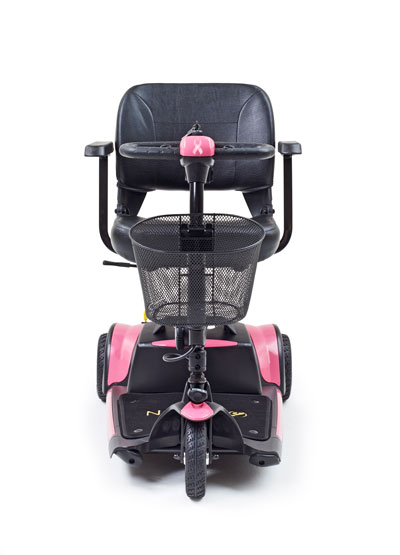When I first entered the industry in the fall of 2000 the typical DME provider’s income was derived from 80 to 90 percent Medicare/Medicaid, 10 or 15 percent third party pay and a maximum of 5 percent retail cash sales. In some cases providers didn’t even have a cash register in their stores and didn’t sell any retail. Now, between competitive bidding and a change in the consumer mindset about shopping for DME equipment, a typical DME’s income mix has changed. Medicare/Medicaid accounts for 20 to 40 percent of revenue, third party pay ranges from 10 to 30 percent and retail cash sales are now an astonishing 50 to 70 percent of their sales.
 Yet many providers still haven’t jumped on the retail bandwagon. As Medicare continues to cut funding for a variety of medical devices, the need to turn to retail cash sales to enhance your revenue stream becomes more important than ever. Remember when lift chairs were covered completely by Medicare? Everyone thought the reduction in Medicare reimbursement for lift chairs would be the end of the industry. The continued growth in lift chair sales year after year proved to everyone at Golden Technologies that people will always find a way to pay for a product they need and want, a product that will enhance their lives and help them live independently. The same is true for mobility products.
Yet many providers still haven’t jumped on the retail bandwagon. As Medicare continues to cut funding for a variety of medical devices, the need to turn to retail cash sales to enhance your revenue stream becomes more important than ever. Remember when lift chairs were covered completely by Medicare? Everyone thought the reduction in Medicare reimbursement for lift chairs would be the end of the industry. The continued growth in lift chair sales year after year proved to everyone at Golden Technologies that people will always find a way to pay for a product they need and want, a product that will enhance their lives and help them live independently. The same is true for mobility products.
For providers looking for ways to navigate the current landscape, selling mobility products for cash is still a viable way to sustain and grow your DME business. As a Medicare supplier, guidelines have been established by the OIG for selling reimbursable items at discounted prices (adherence to these guidelines is highly recommended).
Adding a retail mobility component to your business isn’t rocket science. Successful retailing involves proper planning, marketing and advertising, product selection and store layout. Seek the advice of retailing experts and your vendor partners to gain valuable insights into how to transition from a pure DME provider into a consumer-oriented, retail shopping experience.
The planning involves working with your vendors to make sure you have the right product mix on the floor for a particular selling season. Always make sure you have a “good, better, best” selection for every product category.
 Market your business. If you’ve been in the community for 10, 15 or 20-plus years, promote it! Your longevity proves to people that you are a good company to partner with for their wellness needs. If you are a service provider, tout your service after the purchase. People want to buy from a company they trust will be there after the sale.
Market your business. If you’ve been in the community for 10, 15 or 20-plus years, promote it! Your longevity proves to people that you are a good company to partner with for their wellness needs. If you are a service provider, tout your service after the purchase. People want to buy from a company they trust will be there after the sale.
Recognizing the need to help our providers grow their retail sales, Golden Technologies launched the Golden Flagship Dealer Showroom Program for lift chairs in 2010. This program has proven successful for providers across the country that have seen their retail lift chair sales grow significantly over the last two years, not only by unit volume, but also by increasing their margins by selling higher end chairs. If it takes 30 minutes to sell a lift chair, why make only a $400 profit selling a low-end lift chair when you can make a $1,000 profit selling a high-end lift chair?
The same rationale can be applied to mobility product sales. Last year Golden debuted the Mobility Flagship Dealer Showroom Program with a display system that serves as a “silent salesperson.” The display helps the dealer’s staff sell Golden scooters and the LiteRider Personal Transport Chair, Golden’s first entry into the cash retail power chair market. Introduced in early 2012, the success of this particular product proved to us that a power wheelchair can be sold for cash and providers want to have one on their showroom floor.
The Baby Boomer generation, those ages 49 to 67, are a prime market for cash DME products. Unlike their parents, who survived the Great Depression, Boomers are accustomed to the good life. While their parents held on to every penny they could, Boomers are not afraid to spend money on comfort and convenience. The same is true of the children of Boomers, by the way. Mom and Dad gave them the best, and now that they are adults they want to give back to their parents. Buying a scooter or power wheelchair as a gift for Mother’s Day, Father’s Day or Christmas, or simply when one is needed, has become more common.
With proper planning, marketing, product selection and store layout, providers can turn the old, reimbursement-heavy business model for power mobility into a more secure mix with healthy mobility retail sales.
